We use cookies to make your experience better. To comply with the new e-Privacy directive, we need to ask for your consent to set the cookies. Learn more.
What is a Bong - Types & How to Use it?
When it comes to cannabis, the world is as interesting and vast as you can imagine it to be. From creative DIYs to innovative smoking accessories, getting 'high' isn't just a recreational activity but almost an art form.
When it comes to the variety of smoking devices, there is absolutely no shortage. From the classic-style rolled joints to the newer generation vaporizers, you can find one that fits your needs.
Even though there are many ways in which you could revolutionize your cannabis consumption, there is nothing quite like a good old bong. Known to have existed since the 16 century, it is the most ancient type of smoking accessory. Over the past decades, we have seen bongs made from bamboo, plastics, acrylic, glass, and this variety does not stop at different materials. There are also several types of bongs like percolator, ice bongs, etc that open a whole new world of possibilities for the potheads.
In this article, we will be discussing the history, the present stance, the different types, the working and how to use a bong. The ancient smoking accessory still has a solid fan following, and if you're looking to toke some delicious green herbs, you need to have this in your collection.
Bongs and their history

For the present generation, the stigmatized view of cannabis and bongs does not allow us to embrace the complete potential of this medical miracle and fun plant. However, the use of green herbs is not a millennial thing. In fact, the oldest bongs, almost 11 of them, were found in a cave in Ethiopia, between 1100 and 1400. These were made with repurposed animal horns, pottery, and other material that were in use during their times. A recent excavation in Russia discovered fancy bongs made from gold by the Iranian-Eurasian Scythe tribe. The exceptional gold bongs were used by tribal chiefs and leaders to smoke cannabis and opium.
The water pipe was a popular form of smoking, some 2400 years ago. With the advancement in craftsmanship and technology, the common bamboo bongs are now a beautiful glass masterpiece with better filtration, cleaner hit, and much more. In fact, the word bong originates from the Thai word 'buang' which refers to the bamboo bongs popular in Central Asia.
Now that we are sure that these bong-ventures are pretty much a part of our history, let's take a closer look at this versatile and ancient smoking device.
Anatomy of a bong
The bong is a simple device designed with utmost creativity and functionality, that co-exist to give you a beautiful vapour and exciting flavour, not to mention, the accompanying 'high'. You might have heard people asking how to use a small water bong or how to use a gravity bong.
|Also Read: How to Make a Gravity Bong: Step By Step Guide|
But before we will start with the different types of bongs, let's first have a look at the most basic bong and the essential parts to make the smoking accessory even more alluring and understandable.

Bowl: The bowl of the bong is where you load the dry flowers and herb and light it. It is usually removable and mimics a small bowl with a deep curve for the material.
Carb Hole: Carb is short for the carburettor, which is a small hole present on the side of the bong. The main function of the carb hole is to clean the smoke from the equipment. However, in some bongs, the removable bowl acts as a carb.
Downstem: Downstem is a tube-like, cylindrical pipe that allows the smoke to travel from the bong to the base, where the water is collected.
Base: The base of the bong is where you fill the water. Usually shaped like a vase or a beaker, it is where the smoke filters before travelling towards the mouthpiece.
Neck/Tube: This is the neck of the bong connected to the downstem, mouthpiece, and the base. The vapour travels upwards until it reaches the mouthpiece, from where the user inhales it. The tube has been upgraded over the years, and you can find many variations.
| Also Read: How to Pack a Bowl of Weed Like a Pro? |
Types of Bongs - Materials and Designs
When it comes to bongs, the variety is endless. Over the years, stoners and cannabis enthusiasts have worked to provide multiple masterpieces with supreme craftsmanship, glass blowing talent, and other multiple other features that were utterly impossible before. From ice pinches, splash guards, to better filtration and a clean hit, bongs are even better than what we had before.
In this section, we will be looking at different types of bong material and designs.
The Different Types of Bong Materials
Glass Bongs
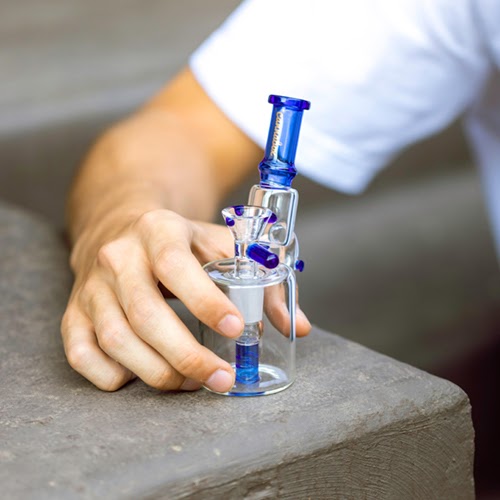
Glass Bongs are the most preferred type of material for bongs. Even though they are known to be more fragile than say, plastics or metal, they have their own set of advantages that makes them top the list. Starting with the obvious, glass bongs are more artistic and aesthetically pleasing than a plain simple acrylic bong. Furthermore, they also provide a clean, pure taste as the glass does not affect the flavour of the smoke.
Glass bongs are known to have a longer life as they are easy to clean and can be returned to their original shiny state with just a good wash. It is also easier to keep track of the build-up resin, which indicates the time to clean it up. So whenever someone asks you which bong to buy or how to use a bong, tell them that glass bongs are best and easiest to use. It is also said that a good quality borosilicate glass can bear a bump or two.
Plastic or Acrylic Bongs
Plastic bongs are prized for their durability and long-life, which makes it perfect for clumsy tokers or a party. The durable and unbreakable characteristic of a plastic or acrylic bong makes it a great travel buddy, so make sure you get this one if you're planning a trip soon.
Plastic bongs stand at the lower side of the price spectrum, especially when you compare it to glass bongs. The only disadvantage here is that the plastic material might interfere with the taste of your smoke slightly.
Ceramic Bongs
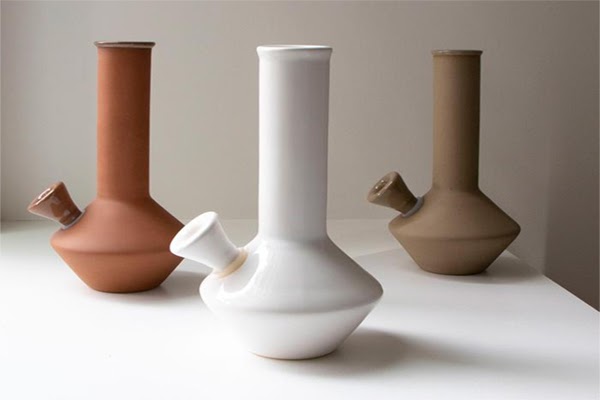
Ceramic bongs are for classic tokers who like the addition of design and a little bit of oomph in their smoking accessory. Even though ceramic bongs are bulky and more susceptible to a shattering accident, cannabis connoisseur understands the artistic value of these bongs.
You can find ceramic bongs in different shapes, sizes, and colours. However, they are more expensive than plastic bongs pertaining to the work they require. If you're a collector, this will be a great addition to your shelf.
Bamboo Bongs
We already know bamboo was one of the most ancient types of material. Being eco-friendly, they have a good range, from just a simple bong to a fancy one. Bamboo bongs are known for their durability and long-life, as a well-maintained one can almost last a lifetime.
Metal Bongs
Though uncommon, there are metal bongs in the market. They rank high on the durability side but have a downside, as they affect the taste of your smoke. It also becomes difficult to judge when it is time to clean them.

| Also Read: Old-School Bong - How to Make A Water Bottle Bong? |
Types of Bongs - Designs
Carburettor Bongs
Remember how we discussed the carb hole in the bong anatomy section? This is what this bong design refers to. If your bong has a hole in the middle, it is classified as a carburettor bong. Even though a carb hole is not a necessary design for a good hit, bong users over the world agree that a carburettor hole allows for a more intense hit since the fresh air forces the smoke into your lungs.
Straight Tube Bongs
Straight tube bongs are the most general and simple type of bongs available in the market. Perfect for those who don't want a lot of complication, they feature a simple bong with a stem and a bowl. All you have to do is pour a bit of water, load it, and light it!
Beaker Base Bongs
The only difference between a beaker base bong and a straight tube bong is the shape of the base. The beaker base bong is designed with a cone-shaped bottom that resembles a beaker. All the other concepts and parts remain the same. Beaker Base Bong is, however, known to be more stable as the wide base allows for more firm ground.
Round Base Bongs
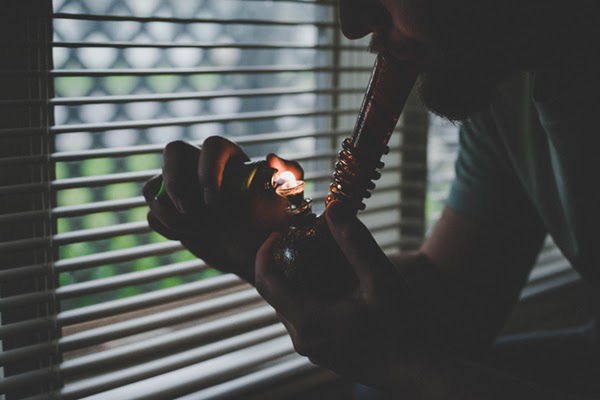
As you can guess from the name, round base bongs are designed with a sphere-shaped water chamber that is flat at the bottom to make the bong stand straight. They are more stable than a straight tube bong, but not more than the beaker- shaped bong as it has a smaller area as a base. The functioning of the bong is similar to that of the other bongs mentioned above.
Multi-chamber Bongs
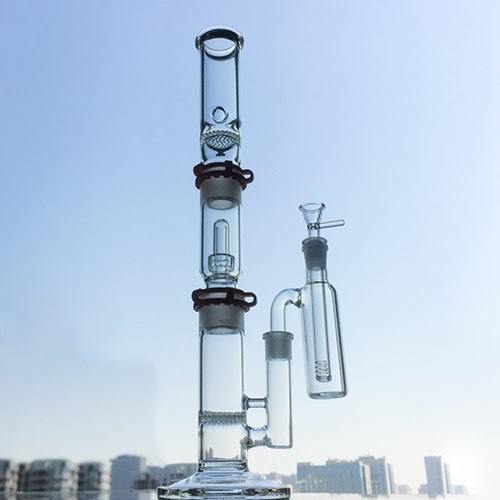
Now here is where the things start getting creative and tricky. Multi-chamber bongs are designed to provide a pure, cool, and smooth hit that is unlikely to be provided by a simple bong. To achieve this, the bong is created with two chambers that are connected through a tube(or chamber). Both the chambers are then filled with water, allowing the smoke to pass through the filtration twice. As the smoke approaches the mouthpiece, the smoke is cooler and smoother than it would have been with a simpler bong. It is also known as a recycler bong and is slightly more expensive than the others due to its complex build.
Percolator bongs
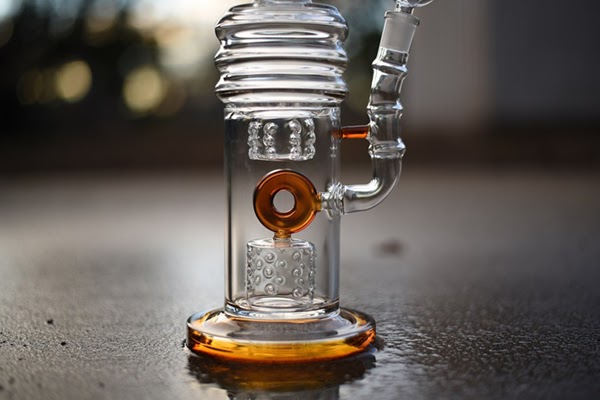
Percolator bongs, also known as bubbler bongs, takes the art of toking a notch higher with its technology. They can be of any shape and size, whether straight-tube, round-case, beaker-shaped, or any other. The beauty of this type of bong is the percolator itself. It is a piece of glass that is used to dissipate the smoke before it reaches the water, causing a bubbling effect. The result is more filtered and cool smoke. The percolator can be placed at the bottom of the bong, in another chamber, or can even be present in more than one area.
These are the most common designs that you can find in any headshop. Other uncommon designs are a bucket gravity bong or a waterfall gravity bong, which relies on the vacuum left behind to function. You can even find a list of DIY bongs when you're craving a hit, and you don't have the equipment.
With this, we come to the MVP of the article - How to use a bong?
Let's have a look.
How to Use a bong?
For a device that has a lot of types and material, you may think that it would be complicated to use it. But once you do, you'd be pleasantly surprised at how simple it is to get a dank smooth hit with this smoking accessory.

Step 1: Fill the Bong with water up to a certain limit. It should be enough to cover one-third of the base, but not so much that the water finds itself into your mouth.
Step 2: Take the shredded dry herbs that you're planning to toke and fill the bowl halfway through it, making sure that you leave enough gap for the air to pass through.
Step 3: It is now time to light it up! Use a lighter to light up the bowl and then cover any carb hole in your bank. This will allow the smoke to travel to the mouthpiece from where you can inhale.
Step 4: Use the mouthpiece to take small hits, especially if you are a novice smoker. You can gradually move to bigger hits when you get comfortable with the accessory.
Pretty simple, isn't it?
I am sure after reading this article, you have good knowledge about bongs and their use. You can make an informed purchase, and even experiment with different types. If you have any doubts or questions, feel free to drop it in the comment below.
Till then, keep toking with Olivastu!



![[UPDATED] Smoking Accessories - 20 Must-Have Essentials for a Beginner](https://www.olivastu.com/media/magefan_blog/smoking-accessories-essentials-olivastu-featured-image.png)
![[Updated] Old-School Bong: How to Make A Water Bottle Bong?](https://www.olivastu.com/media/magefan_blog/bottle-featured.jpg)
![[UPDATED] How to pack a bowl of weed perfectly?](https://www.olivastu.com/media/magefan_blog/Featured3.jpg)